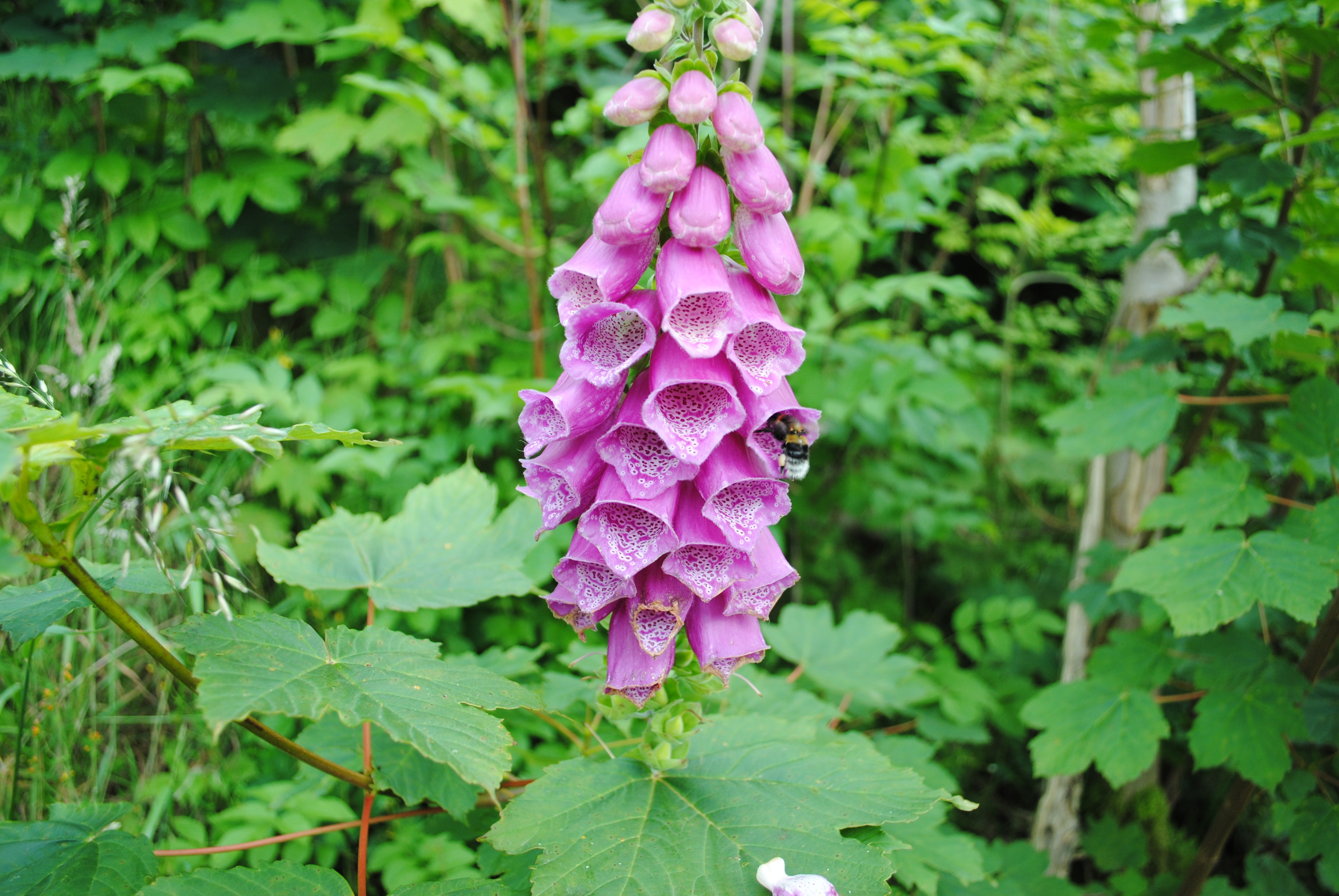Near Powmill in Kinross-shire lies a gentle hill slope that four or five years ago was clear-felled of towering Scots pines. At the time I viewed the felling with a degree of sadness; it was not a big piece of ground but I had become accustomed to the pines and the way the land was.
But what has surprised me over the intervening period is the speed that this now open ground has become naturally colonised by a range of pioneering flora. The slope is like a canvas being continually painted and updated by nature, changing with each passing year.
The transformation has been quite astonishing – previously under the shady pines the ground vegetation consisted primarily of short grasses and blaeberry, but now a new range of plants have quickly moved in to take advantage of the sunnier and more open aspect brought into being.
Foxgloves are especially abundant, their beautiful purple bell-shaped flowers held aloft on towering spikes. The plant produces thousands of tiny seeds held in egg-shaped capsules which I imagine are scattered a reasonable distance whenever the long-stemmed flowers sway in the wind.
The foxglove is such a brassy plant, so eye-catching and dominant compared to our other native flowers. Bumble bees love foxgloves and as I make my way across the clear-felled slope I become engrossed in watching them enter the tubular flowers before slowly backing out again after having supped their fill of nectar.
There are other colonisers here too and when scanning the ground I find yellow-flowered St John’s wort, broad-leaved willowherb and burdock. I can certainly see how the burdock made its way here as their seed-filled flower-heads have miniscule hooks that stick to the coats of roe deer and foxes like Velcro, enabling the plant to spread far and wide.
Nearby, I discover the ultimate pioneer – the sapling of a birch tree. The birch is very much a trail-blazing species, often being the first to colonise areas of cleared ground. The wind-blown seeds are easily spread and gain a tenacious grip in the soil so as to eventually form large tracts of scrubby woodland.
Birch forms a very important role in improving nutrient deficient land, its shed leaves helping to enrich the soil in preparation of the arrival of other trees fussier in their requirements. In some ways the birch is engaged in the tree equivalent of suicide because the eventual arrival of taller growing species such as oak and beech will ultimately shade them out.
So, was the tree-felling on this little piece of land in Kinross-shire a good or bad thing for nature? Well, a bit of both really, the blaeberry, mosses and other forest loving plants no longer thrive, but in their place is a whole new arrival of other flora and the invertebrates they support. Despite my initial misgivings, I certainly enjoy the area as much as before, albeit for entirely different reasons.
Info
Some bird species will also initially benefit from new areas of open land, especially warblers. Over the years, the succession of different types of vegetation will result in changes in abundance of a wide range of creatures.










